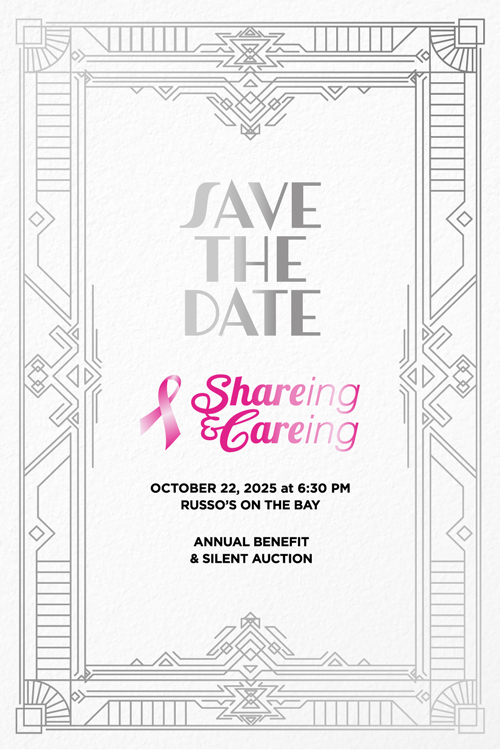Each year in April, the nation comes together to celebrate and advocate for cancer patients, survivors, and caregivers with National Cancer Control Month. Cancer is diagnosed in over 1.9 million Americans and claims the lives of over 600,000 of our friends and family every year. It is the leading cause of death in the U.S., second only to heart disease.

What is the History of Cancer Control Month?
In 1937, with the passage of the National Cancer Act, the National Cancer Institute was founded as a government agency, the first time the U.S. government had provided funding for a non-communicable disease like cancer. While great strides were being made in cancer treatment at the time, there was much to be done—in 1938, much like today, cancer was the second leading cause of death in the United States.
That year, Congress authorized and requested the President to proclaim April 1939, and every April annually, as Cancer Control Month. President Franklin D. Roosevelt agreed and proclaimed the first Cancer Control Month in 1939, with the desire to “impress upon the people of the Nation the necessity for this program and the importance of constant vigilance in this fight for humanity.” Each year, the sitting President reaffirms and renews our nation’s commitment to cancer control with an annual proclamation, making April Cancer Control Month.
Goals of National Cancer Control Month
Cancer Control Month was established first and foremost as a tool for public health awareness to help prevent cancer, detect it early, improve treatments, and improve the quality of life of those affected.
1. Prevention
30-50% of all cancer deaths are preventable by modifying or avoiding known cancer risk factors. Cancer can be controlled significantly by making lifestyle changes such as: quitting smoking, reducing air pollution exposure, avoiding alcohol, practicing safe sex, eating a healthy diet, getting vaccinated against HPV and hepatitis B, maintaining a healthy weight, reducing sun and other types of UV radiation exposure, getting regular exercise, and getting regular medical care. In the case of breast cancer, breastfeeding and preventative mastectomies can also reduce risk.
2. Early Detection
More than half of all cancer deaths cannot be prevented. These diagnoses can be the result of a variety of unavoidable factors such as family history, ethnicity, heritage, dense breasts, or gene mutations. For these patients, regular doctor checkups and cancer screenings, like mammograms, breast self-exams, pap smears, colonoscopies, breast MRIs (or, even ‘fast MRIs’), testicular self-exams, lung CT scans, and breast ultrasounds, can be the first sign that something is wrong, before symptoms even show themselves. Early detection finds cancer in its early, most treatable stages, when treatment is likely to be its most effective. Many cancers like triple-negative breast cancer and colorectal cancer benefit greatly from early detection either because of low survivability or lack of treatment options for later stages. As found in a recent study, missing regular mammograms increases risk of death from breast cancer. Early detection does save lives!
Less Stress for Women Who Know Their Genetic Risk for Breast Cancer
3. Enhance Treatment
Better and more precise therapies also save lives. Cancer Control Month acts as an important means to raise funding for and research interest in developing these new and advanced treatments. New approaches to standard therapies like chemotherapy, radiation therapy, and surgery as well as the newer field of immunotherapy are helping to reduce the lives lost to this terrible disease.
4. Patient, Survivor & Caregiver Support
For survivors, those living with cancer, or their caregivers, Cancer Control Month highlights their courage, brings public awareness to the difficulties of a cancer diagnosis, and empowers individuals and organizations to develop patient support initiatives. Those affected by cancer endure a variety of hardships, often unseen by those around them. SHAREing & CAREing was founded in 1994 by cancer survivors to alleviate these hardships and provide help with patient navigation, transportation, medical bills, insurance, and reduced-cost treatments, screening, wigs and prostheses. Our one-on-one support and group support meetings build long-lasting connections while exploring how cancer affects things like anxiety, sleep, wellness, and relationships.
Get our “Thriver Thursdays” Email
Get all the latest cancer prevention and treatment news plus upcoming survivor programs, straight to your inbox every Thursday. Your privacy is important to us.
What Can We Do?
If you’re wondering how to celebrate Cancer Control Month, there are a lot of options! Most importantly, make sure you’re up-to-date on all your cancer screenings such as mammograms (breast cancer), colonoscopies (colorectal cancer), pap smears (cervical cancer), and lung CT scans (lung cancer) if you are at high risk. Consider spreading prevention and early detection awareness by sharing our cancer articles or requesting a Be A Friend To Your Mother school seminar or Lunch & Learn workplace seminar. If you would like to support those affected by cancer directly, fundraise for or donate to a local cancer organization like SHAREing & CAREing. Every dollar helps to raise awareness, educate about prevention and early detection, and provide crucial support services that alleviate financial, physical, and emotional hardships for patients, survivors and caregivers.
Sources
- A Proclamation on National Cancer Control Month, 2022, The White House
- Leading Causes of Death, Centers For Disease Control and Prevention (CDC)
- The Code of Federal Regulations of the United States of America, Book 1, United States Government Printing Office
- National Cancer Institute (NCI), National Institutes of Health (NIH)
- Cancer, World Health Organization (WHO)
- Screening Tests, Centers For Disease Control and Prevention (CDC)


